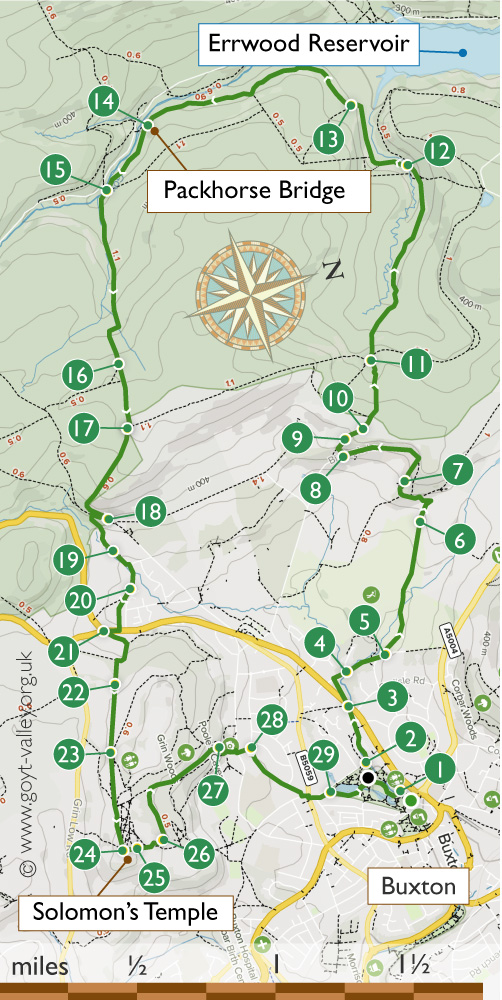Goyt Valley walk 21: Buxton to Goyt Valley
Walk distance: 9 miles | Date recorded: October 2019
Start point: Buxton Pavilion Gardens car park (SK17 9AR) | Google Map
Map app: View on OutdoorActive | Contact me for GPX file
Recorded in mid-October to capture the colours of Autumn, this is the second walk in the series starting from the Georgian spa town of Buxton. It follows some of the same paths as walk 9, but is slightly longer at just over nine miles.
It passes the famous Buxton landmark known as Solomon’s Temple, as well at the popular Poole’s Cavern.
The starting point is Buxton’s famous Opera House, which is just a short walk from both the train station and the town centre, beside the entrance to the Pavilion Gardens. The nearest car park is off Burlington Road.
The walk can easily be extended by circling Errwood Reservoir from point 12 on the map (see walk 13). Or shortened by avoiding the visit to Solomon’s Temple (point 18). Some of the paths can get muddy, so walking boots are recommended.
Above: A ‘Relive’ version of the walk with photos taken in October 2019. Click to play and use the expand option to view in full-screen. Click here for more Goyt Valley ‘Relives’.
Above: Click map to expand.
View printable A4 map.
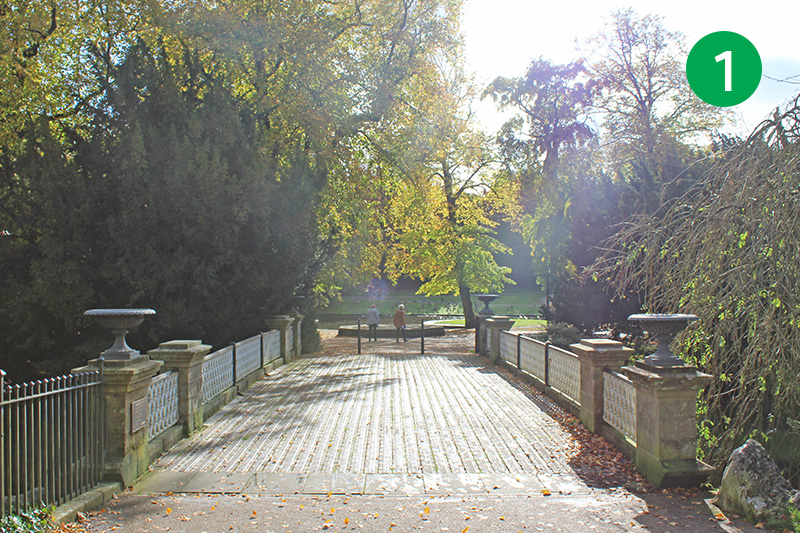
1: Go through the gates to the left of the Opera House into the Pavilion Gardens. Turn left across the wide footbridge and then right, following the path through the trees. Walk in the same direction until you reach Burlington Road.
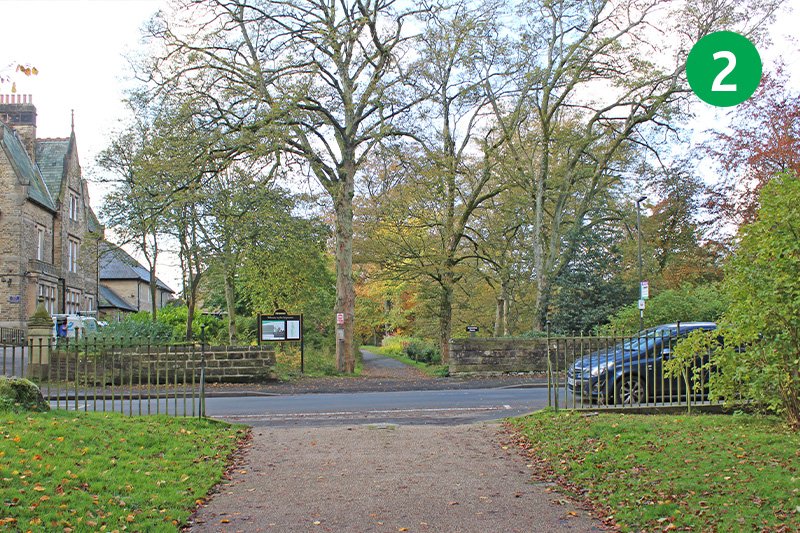
2: Cross the road into the Serpentine, following the path to the right, and keeping the River Wye on your left. Cross over a small footbridge on your left and follow the path to the right, up to the A53 main road.
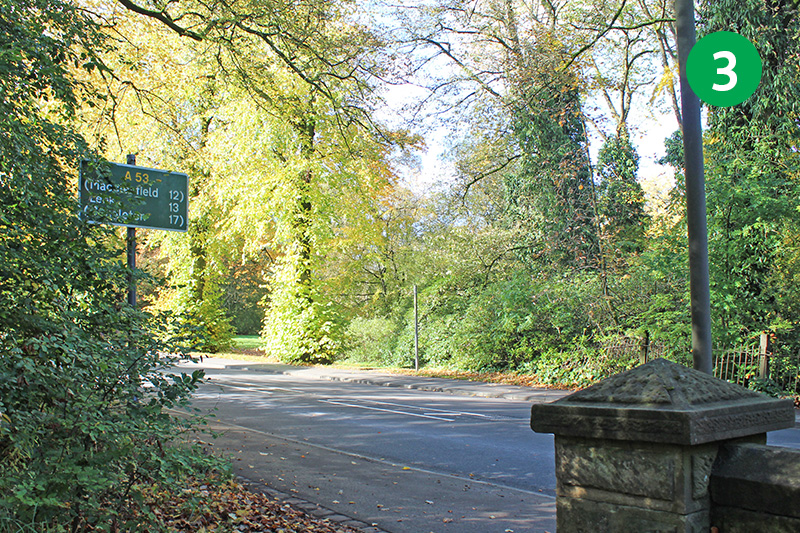
3: Continue in the same direction over the road, following the narrow path through the trees until you reach a smaller road (Gadley Lane), and turn right down the slope.
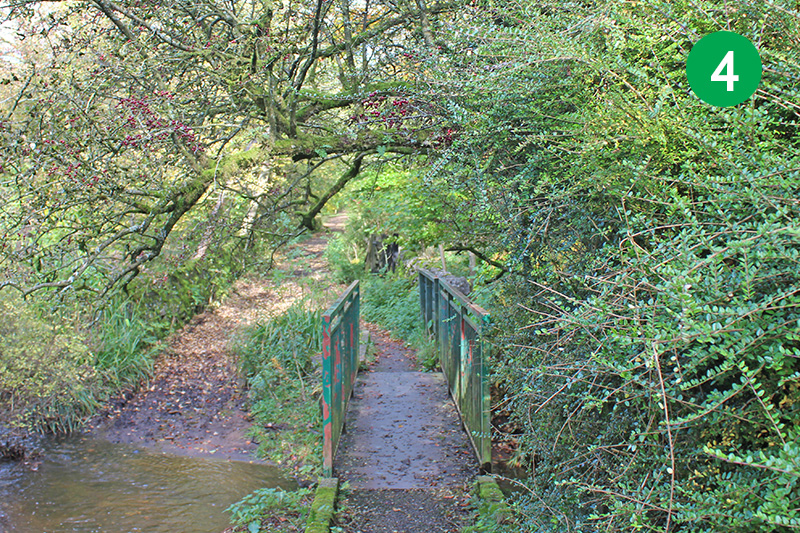
4: Cross the narrow footbridge beside the ford and continue up the track.
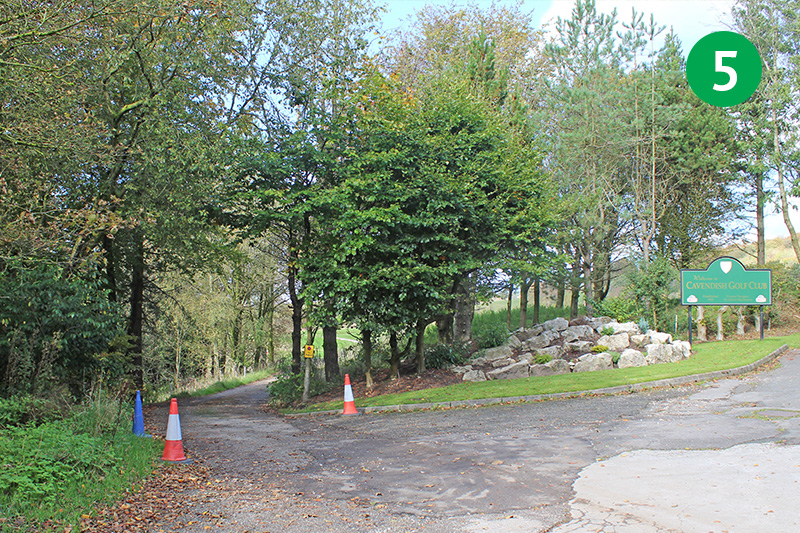
5: Turn left just before you reach the sign to Cavendish Golf Course. This footpath crosses the golf course, so make sure you’re clearly visible to any golfers. (There is a bell along the path you can use to warn them.)
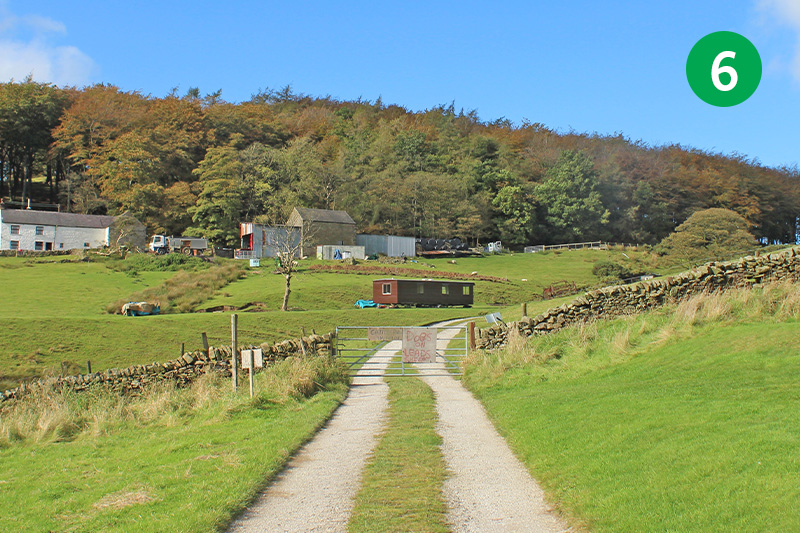
6: Go through the farm gate at the end of the footpath and follow it as it winds up the slope, first to the right and then left.
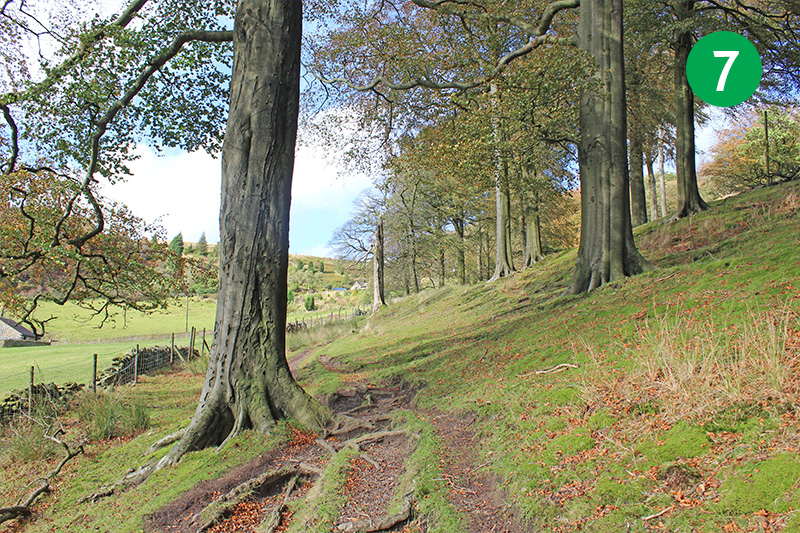
7: Keep to the left of the farmhouse, following the footpath sign on the wall, and walk along the farm track. Turn right just before a farm gate, keeping the stone wall on your left, following the narrow path through the trees.
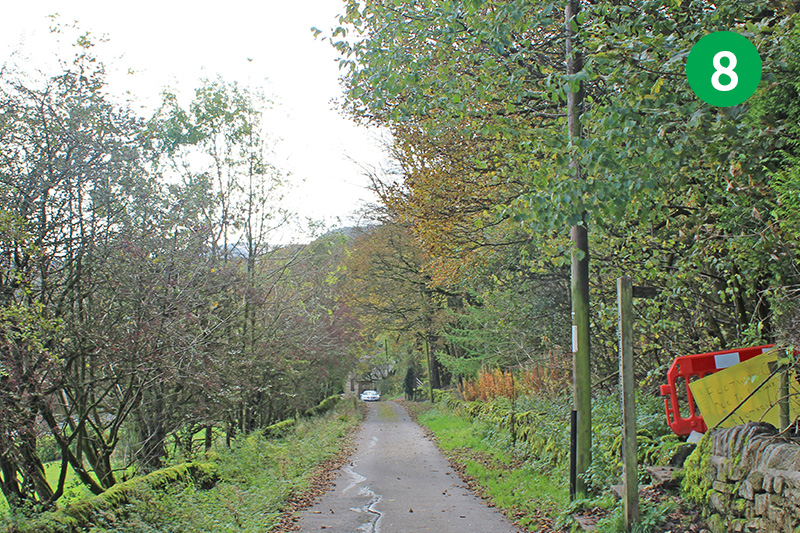
8: Go through a gate at the end of the path, passing a farmhouse on your right, and follow the drive down the slope. Look out for a footpath sign on the right, just past some garages, and head up the steps.
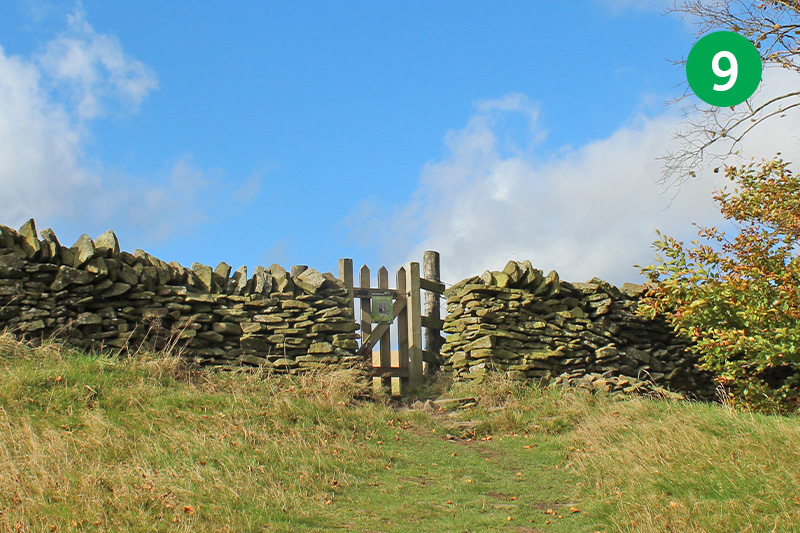
9: Follow the narrow path as it winds first to the left and then the right, up to a wooden gate.
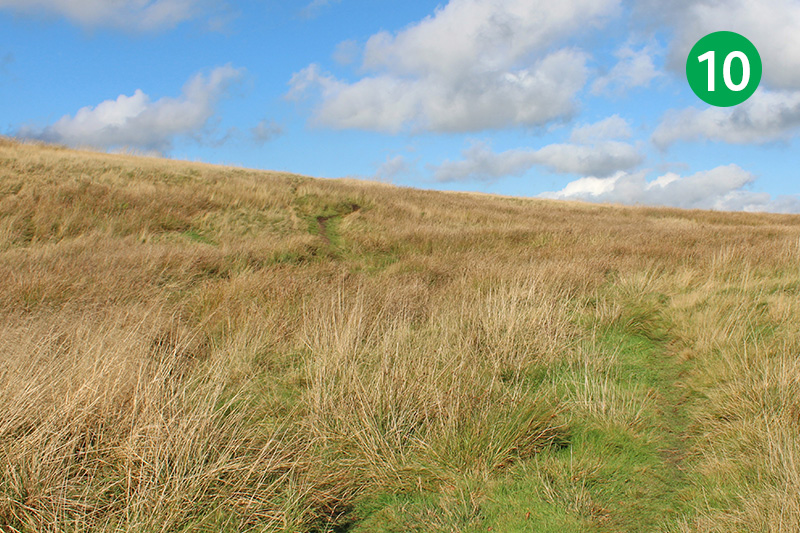
10: Follow the path to the right across the moorland, and then diagonally left up the slope. (This path is easy to miss, so be careful not to go towards the trees on the right.)
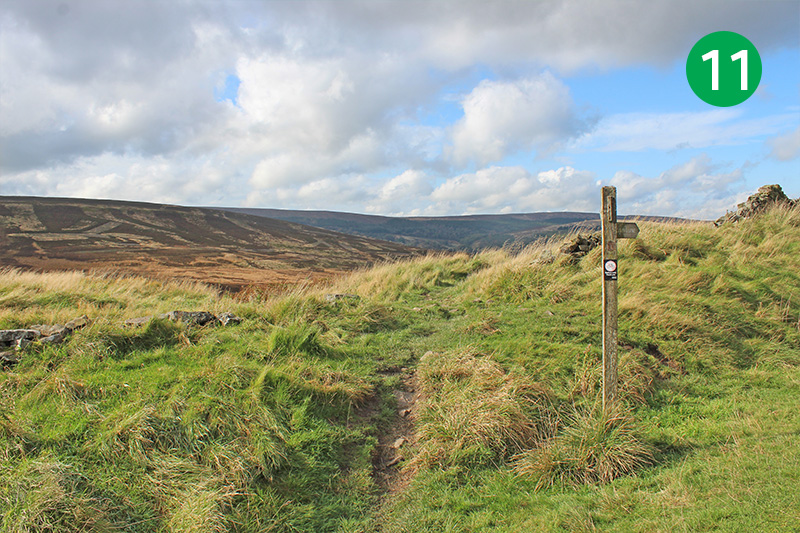
11: Follow this path as it slopes down, keeping the stone wall on your right. Eventually you reach the old track of the Cromford & High Peak Railway. The entrance to the longest tunnel on the line is to the left. Follow the footpath sign on the right down the slope.
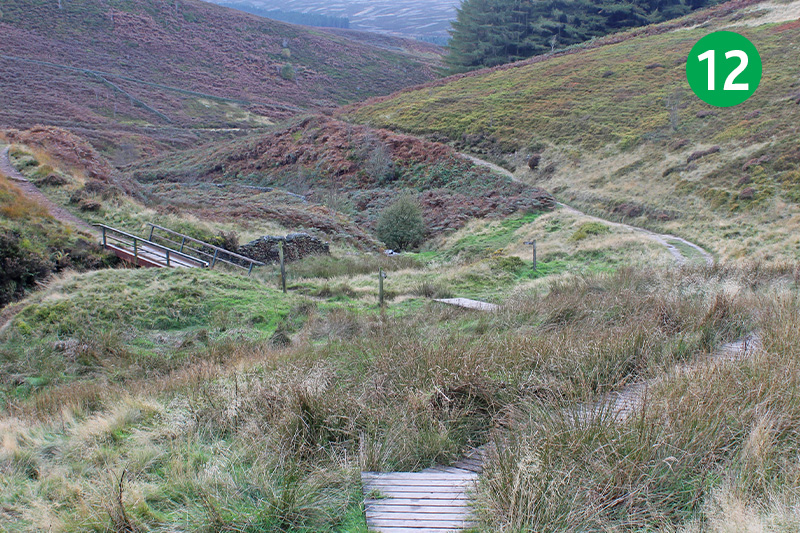
12: You eventually reach a wider track. This walk description goes left, across the metal bridge. But you may prefer to turn right and circle Errwood Reservoir, adding about three miles to the walk. Simply keep the reservoir on your left until you can cross over the packhorse bridge on your left (point 14).
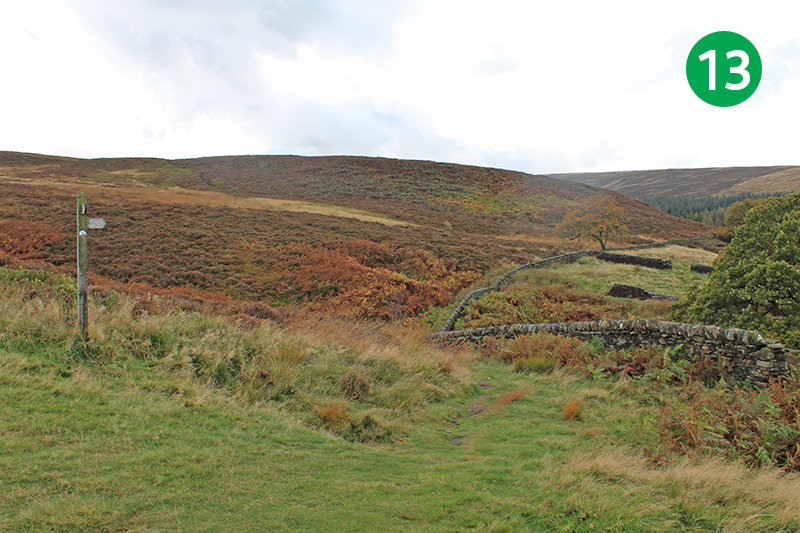
13: Follow this wider track up the slope and around to the left until you see a footpath sign. Take the right fork, keeping the stone wall on your right. The path soon crosses through a gap in the wall, and then meanders through ferns for some distance. It can get muddy in places, but a series of duckboards help.
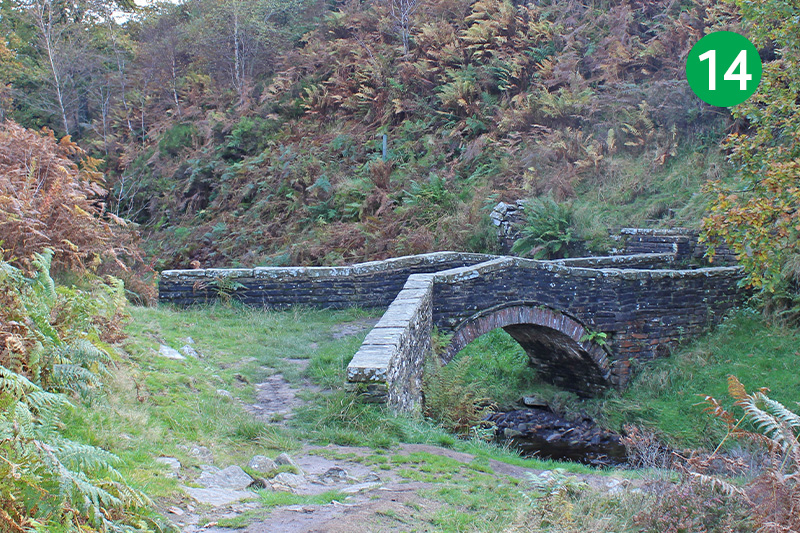
14: After some distance you see the picturesque packhorse bridge in the valley to the right. The walk continues on this side of the River Goyt, but the bridge is a perfect spot to rest awhile. It was moved here from Goyt’s Bridge in 1965, just before Errwood Reservoir was flooded. Retrace your steps and turn right to continue.
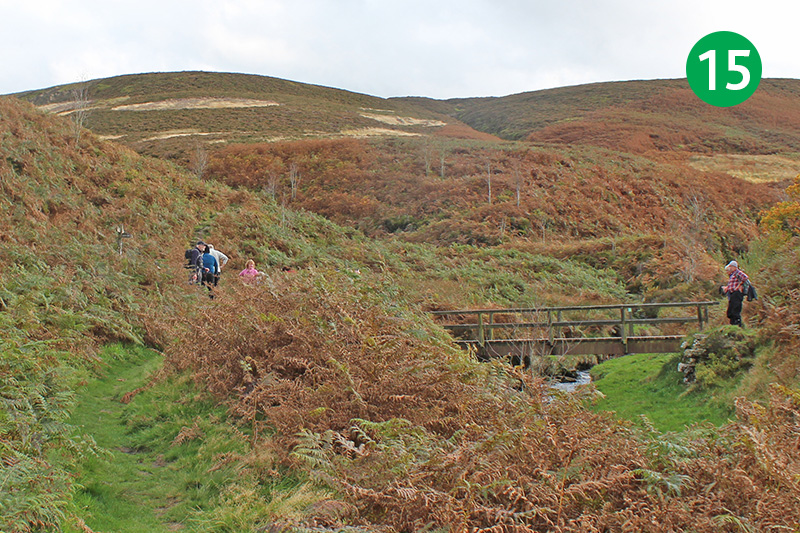
15: Follow the path through the ferns (which can get overgrown from mid-summer), eventually passing a footbridge on your right. From here the path slopes up to the left. Continue along this fairly narrow track for some distance.
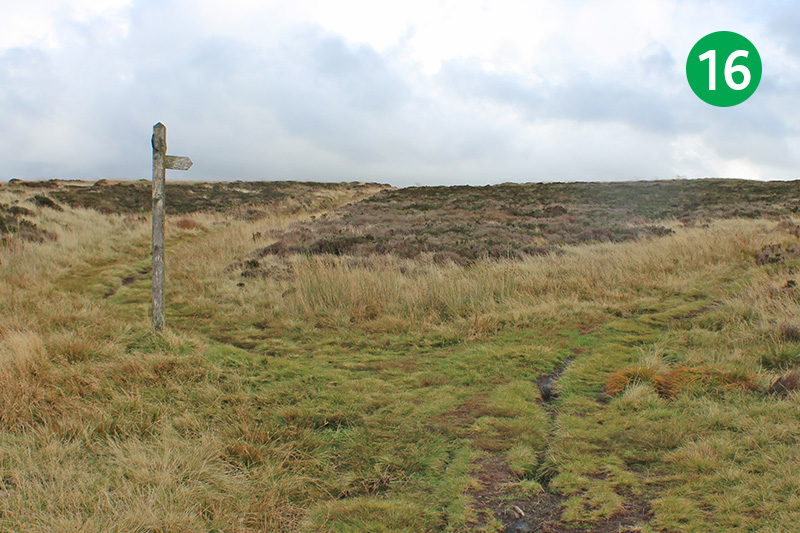
16: Take the left fork when you eventually reach a footpath sign. (The right would take you towards Axe Edge and Derbyshire Bridge.)
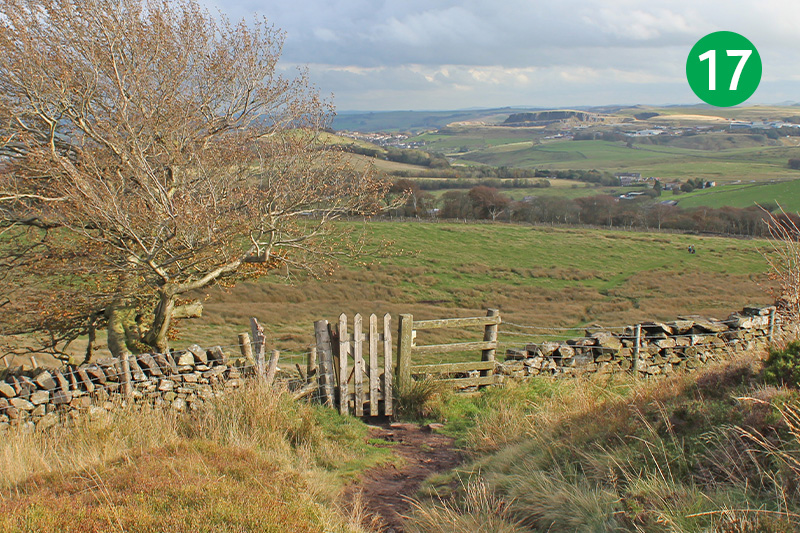
17: After reaching the brow of the hill, the path slopes down to a small wooden gate leading into a field. Follow the fairly indistinct path, which eventually leads down towards the far left corner. (Sometimes there are cattle and calves in the field, so keep any dogs under close control.)
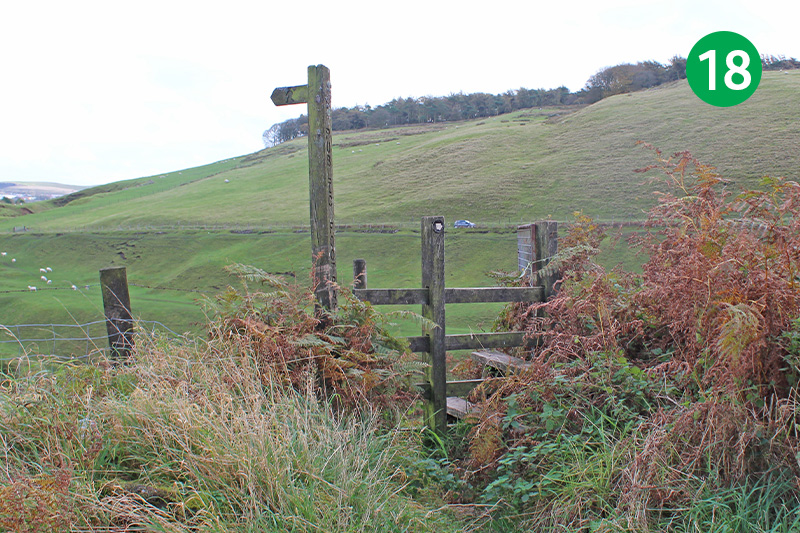
18: The path leads down to the old Macclesfield turnpike. At this point you can shorten the walk by turning left which will take you back to the A53 and Buxton. To continue this walk, turn right along the track, and then left down the slope at the next footpath sign. Follow the path diagonally left through a farm gate, and keep on the narrow path as it slopes down to the stream.
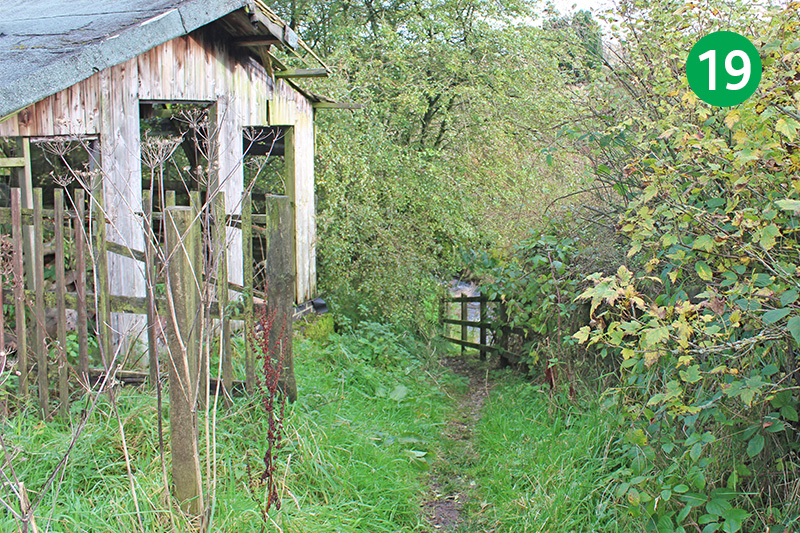
19: Keep to the right of some derelict buildings and follow this narrow and fairly overgrown path until you reach the road. Turn sharp right until you reach a narrow path to the right of a house.
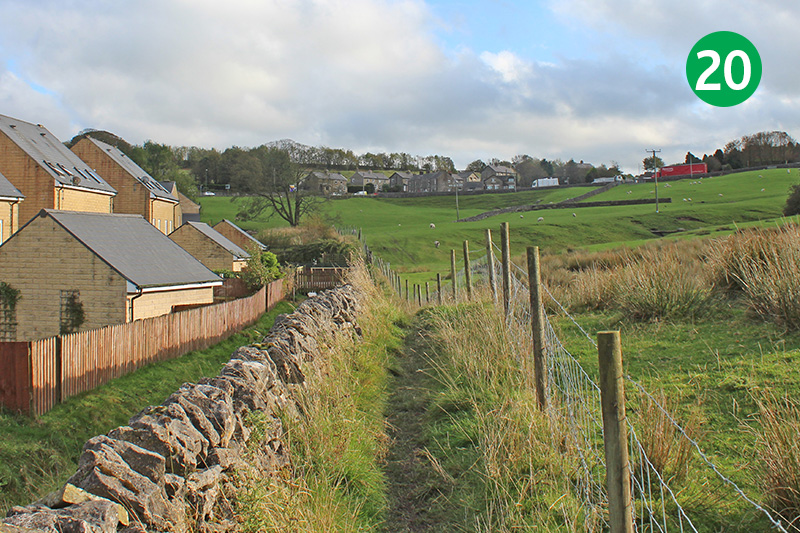
20: Follow this narrow path to the right of houses until you reach the main A53 road. Cross the road and turn right, away from Buxton.
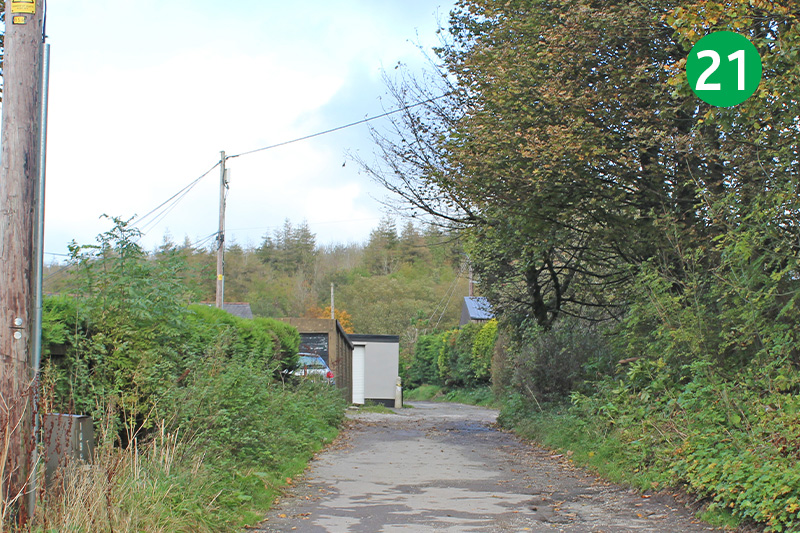
21: After a short distance along the road, turn sharp left towards some industrial buildings. Go past these and through a gate, following the wider track. Look out for a footpath leading up some steps just a short distance further on the left.
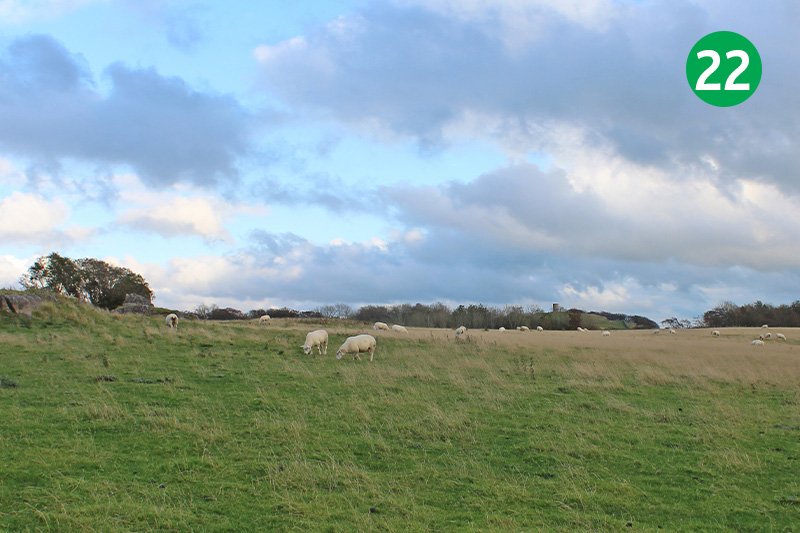
22: As you exit the path into a wide field, keep straight ahead, but slightly to the left, and cross the single track road. You will soon see Solomon’s Temple of the far horizon.
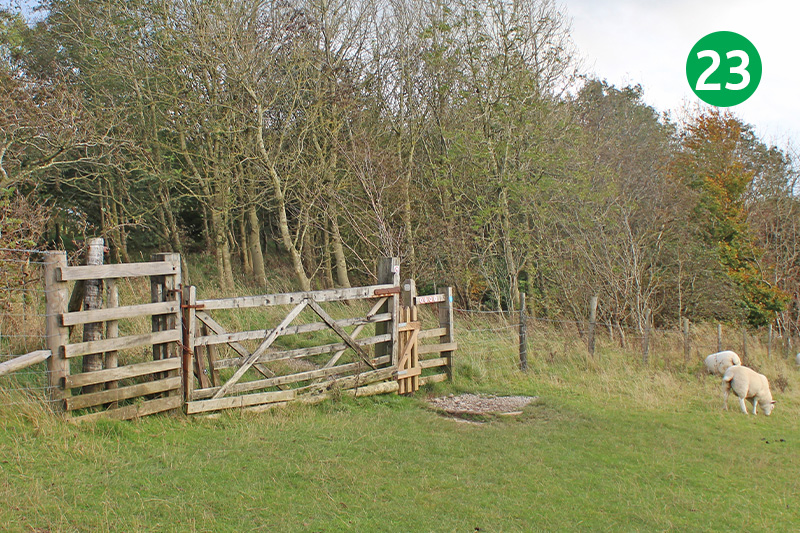
23: Keep in the same direction and you eventually come to a wooden stile beside a farm gate leading into woodland. Go through here and then another gate a short distance further. Continue in the same direction across the moorland, to reach Solomon’s Temple.
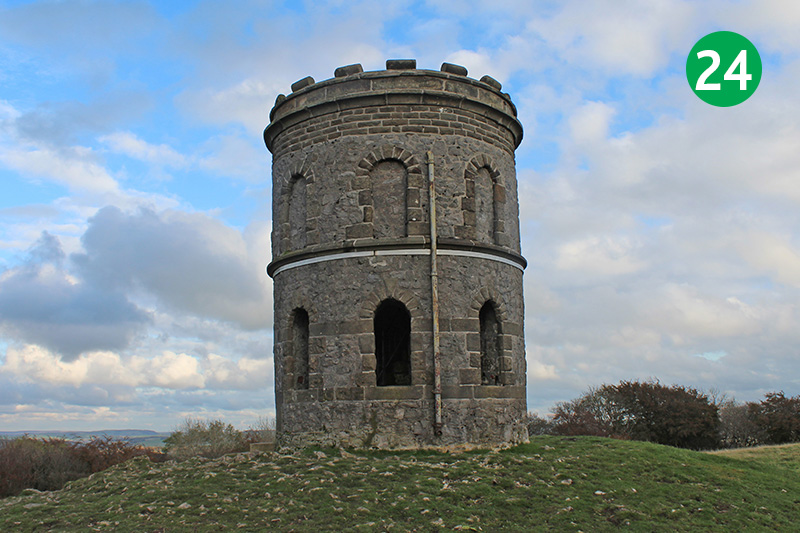
24: Clearly visible on the skyline from Buxton, Solomon’s Temple was built in 1894 on the site of a previous Victorian folly. It sits on the site of a Bronze Age barrow, and the small museum in the nearby Poole’s Cavern contains some fascinating finds. The panoramic view from the top is well worth the short climb.
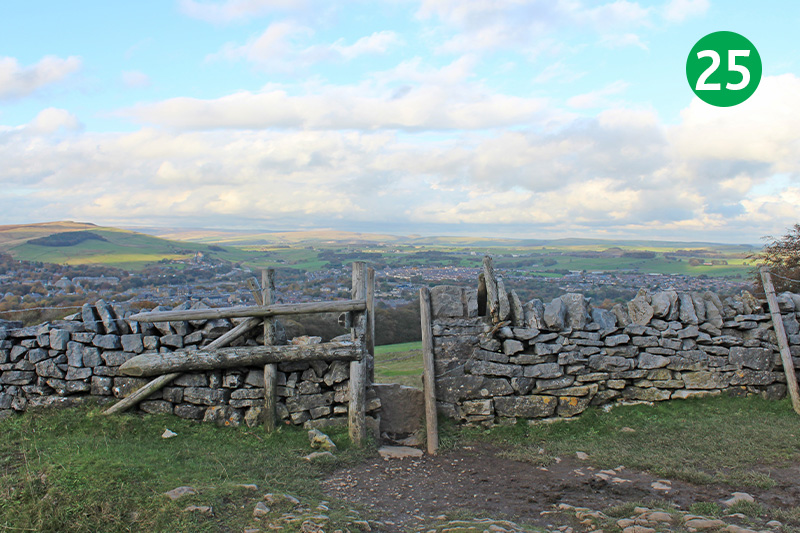
25: From the doorway of the tower, head in the same direction down the slope, and through a small stile. You soon see the remains of ‘pudding pie’ kilns used to burn lime from the 16th to early 19th centuries. Keep to the left of the largest one and head towards a farm gate in the stone wall.
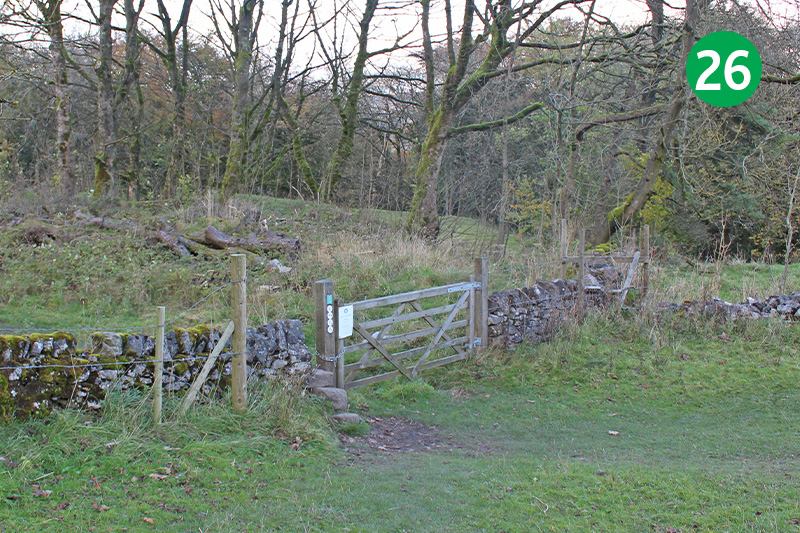
26: Go through the gate and follow the path, turning right down the slope when you reach the wider track. This 100-acre woodland, known as Grinlow Wood, was planted around 1820 by the Duke of Devonshire to hide the eyesore of limekilns and quarries from visitors to Buxton.
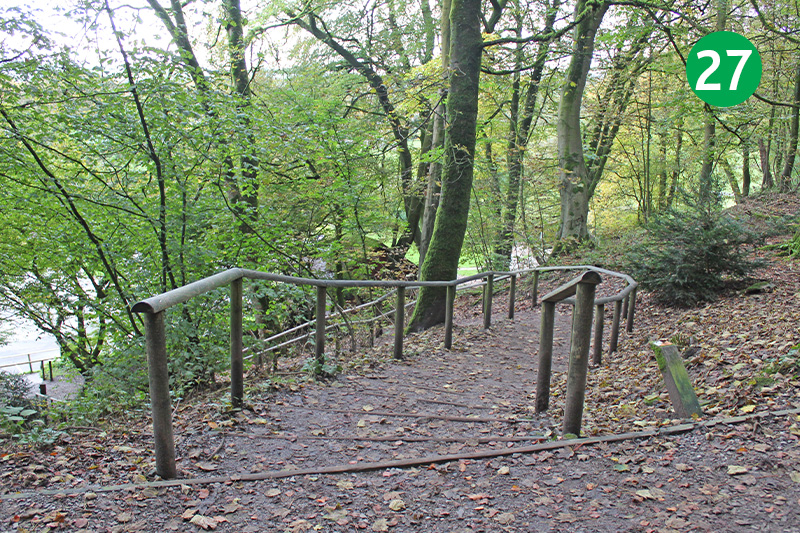
27: Turn right down some wide wooden steps to reach the car park at Poole’s Cavern. To the right is ‘Go Ape’, a popular activity centre which takes people of all ages through the trees. Poole’s Cavern on the left has been a famous tourist attraction since Victorian times, and is well worth a visit.
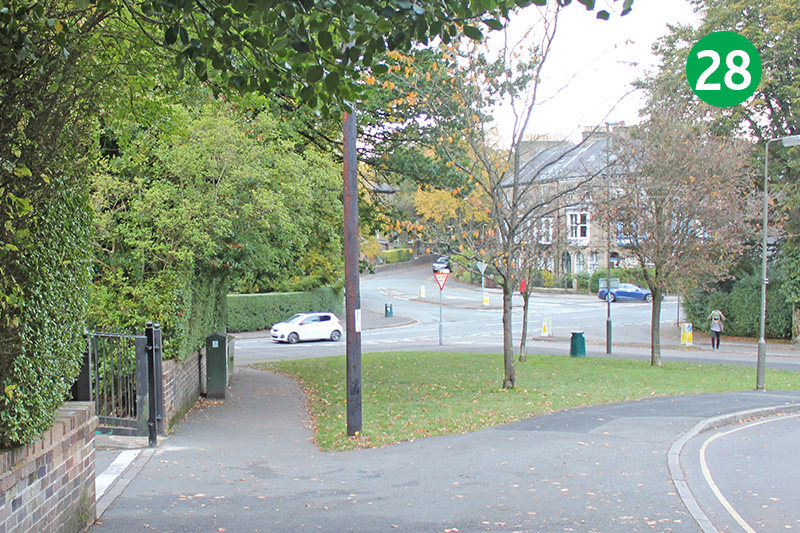
28: After exiting the car park, head across the road in the same direction, and then right at the T-junction, along Temple Road. Follow this all the way down, past the school, until you reach the main road. Cross here and turn right and then left and you will see the entrance to the Pavilion Gardens straight ahead.
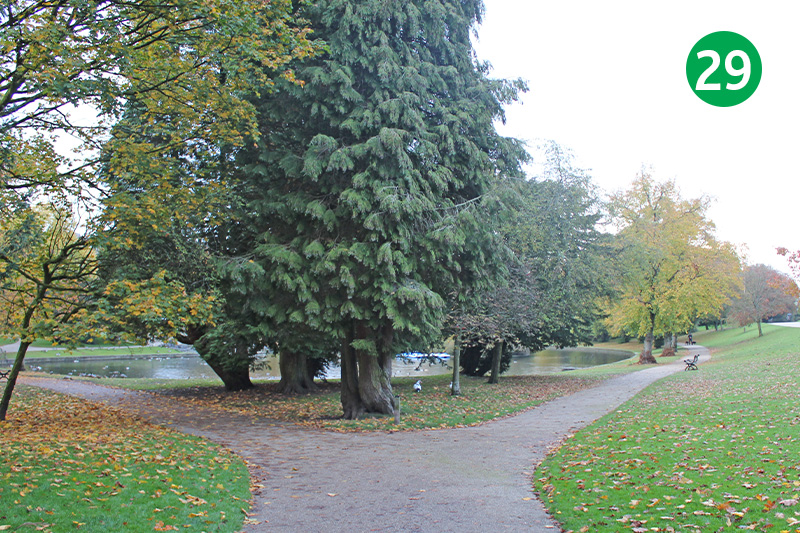
29: Go past the display board into the gardens. The path splits either side of the boating lake. Both routes lead back to the starting point, where teas and refreshments are available in the cafes. Or head into Buxton town centre for a wider choice of fare.
Page update: YouTube clips
I’ve created a couple of slow-moving videos of this walk, set to some chilled jazz. Click either to play, and the expand button to view in full screen.
